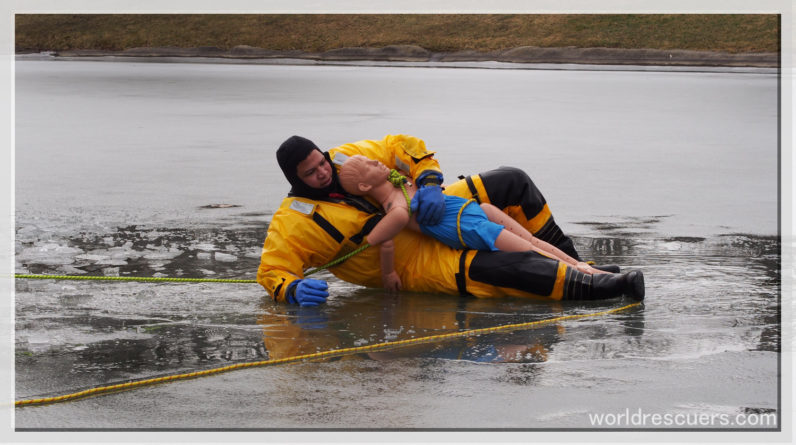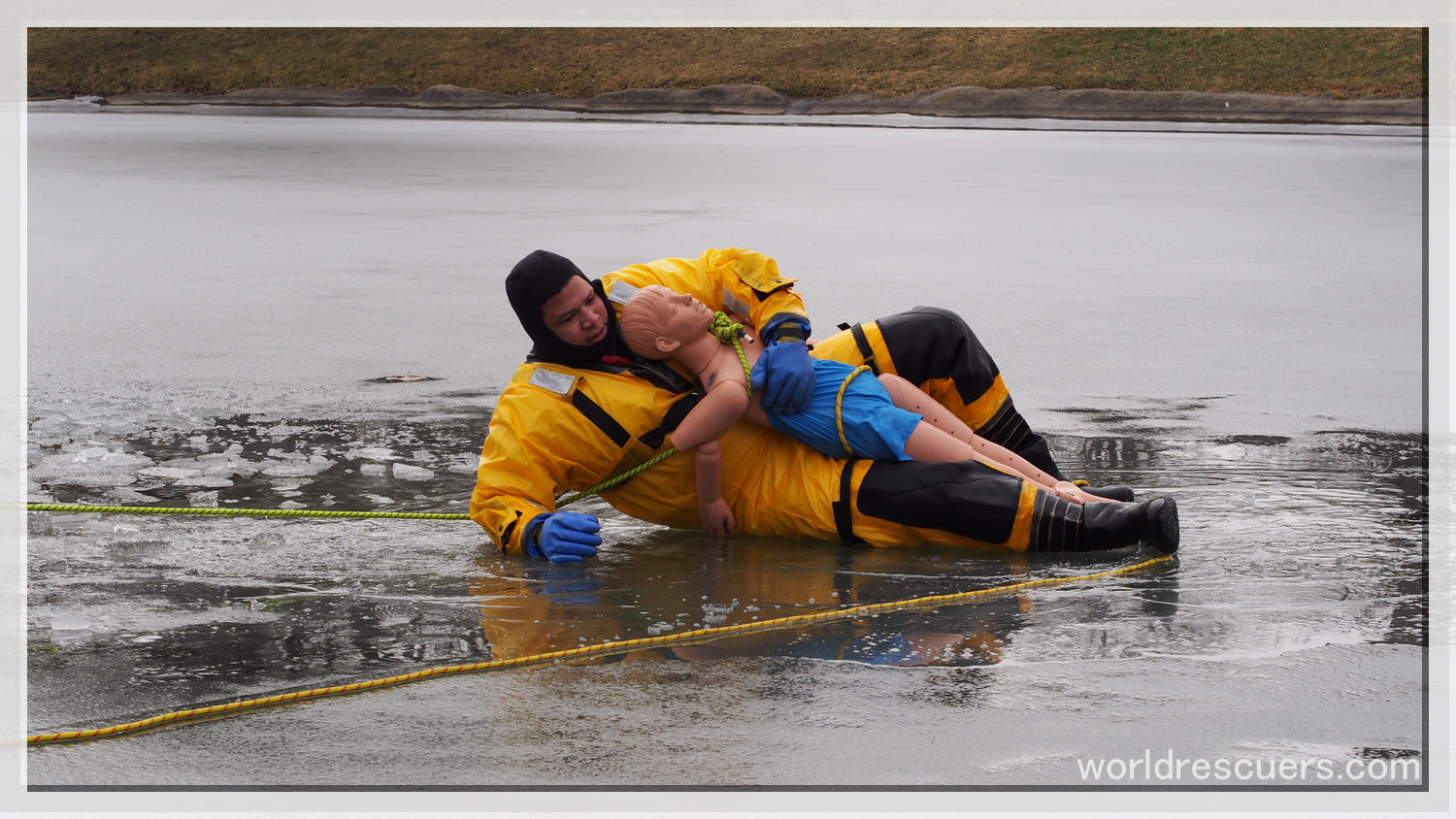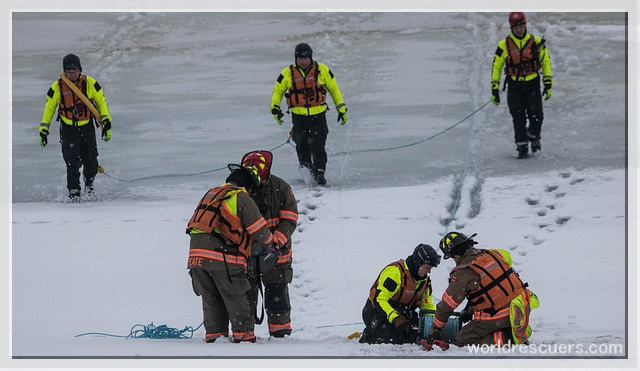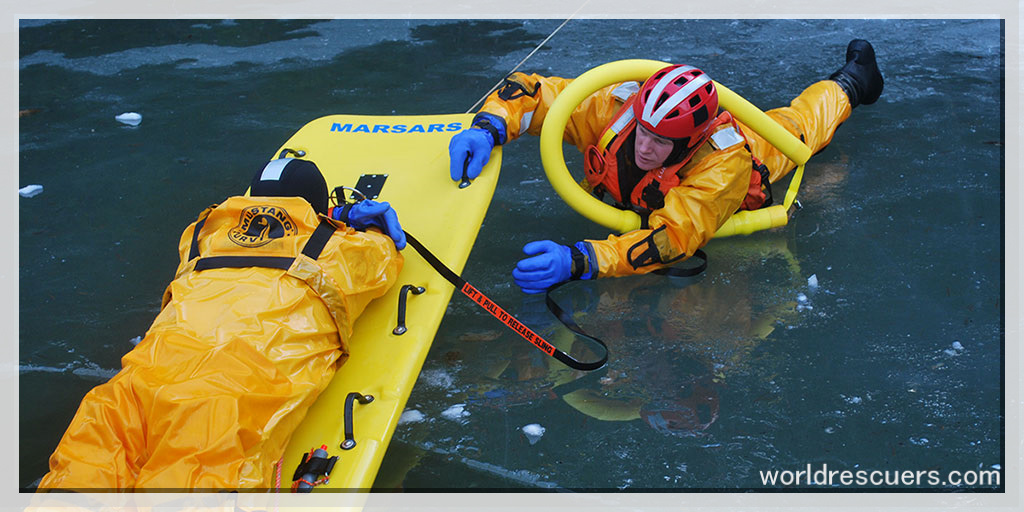
5 steps to a safe ice rescue
When temperatures plunge, ice becomes a hazard. If you or someone you love falls through the ice, it’s important to know how to rescue them quickly and safely. With a few simple steps, you can be prepared for an ice rescue.

The following 5 steps should be followed for a safe ice rescue:
1) Recognize the ice condition – does it look thick enough to support the weight? What is the underlying surface?
2) Consider your own abilities and skillset and plan accordingly
3) Wait as long as possible before initiating any rescue operation
4) Make sure everyone is communicating with one another about their actions and sharing their progress
5) Handle people who are hypothermic first, then move on to those who are not
How to prevent an ice rescue situation
There are several steps that you can take to prevent an ice rescue situation. First, be aware of the conditions and know when it is safe to go onto the ice. If the ice is not thick enough, it could break and you could end up in the water.
second, always wear a life jacket or floatation device when on or near the ice. This will help keep you afloat if you do fall in.
Third, carry a set of ice picks with you. These can be used to help you climb out of the water if you do fall in.
Fourth, let someone know where you are going and when you expect to return. This way, if you do get into trouble, someone will know where to look for you.
Finally, if you see someone else falling through the ice, do not try to rescue them yourself. Call 911 and wait for trained rescuers to arrive.

What to do if you witness an ice rescue
If you witness someone falling through the ice, the first thing you should do is call 911. Then, try to assess the situation and see if there are any immediate dangers, such as the person being pulled under the ice or into deeper water. If it is safe to do so, try to throw them a rope or something that they can grab onto. Otherwise, wait for emergency personnel to arrive.
How to safely perform an ice rescue
1. The first step in safely performing an ice rescue is to assess the situation. You need to ensure that the person or animal in need of rescue is actually on the ice and not on the solid ground nearby. If they are on the ice, you need to determine how thick the ice is and whether it is safe for you to go onto it.
2. Once you have assessed the situation, you need to call for help. If you have a phone with you, call 911 or your local emergency number. If you don’t have a phone, yell for help from someone on shore or from another nearby ice floe.
3. If it is safe for you to go onto the ice, approach cautiously. Do not run, as this could cause the ice to break. Throw a rope or other object to the person or animal in need of rescue, so that they can pull themselves out if possible.
4. If the person or animal cannot pull themselves out, you will need to go onto the ice and physically rescue them. Again, approach cautiously and do not run. Bring a rope with you so that you can secure the person or animal and pull them to safety.
Winter Month
In the winter months, ice rescue can happen almost anywhere. The most likely scenario is that a car has gone off the road and crashed into a body of freezing water. Due to the law of buoyancy, ice rescue involves breaking ice to reach your victim who may be trapped in their vehicle.
This is especially true during the winter months when icy conditions can make the roads dangerous – and even deadly. Snow and ice are a winter hazard for your home. They can do serious damage to roof shingles and the fascia boards that frame your house, not to mention more costly repairs such as replacing gutters, downspouts, or even entire.
The first step in an emergency
It’s the middle of winter and you have just had to rescue someone who has fallen through the ice. The first step is to call for help. If no one is nearby, then call 911 immediately and ask for assistance. The next step is to determine where the person went in by looking at any footprints, broken ice, or snow that may have been disturbed.

The next step is to rescue the person from the ice by using a long object like a pole, branch, or rope. Once rescued make sure they are warm, dry, and comfortable before moving on to determining how much water got into their lungs. Finally, it’s important not to forget about safety when you are rescuing people from ice. Make sure that you do not put yourself in danger while doing so and if possible have a backup.

Hi, I am John Smit a Captain in Fire Department City of Newyork with over years of experience in the field of Firefighting and HSE. My passion for fire safety started when I was a young boy and witnessed a neighbor’s house go up in flames along with precious lives. Since then, I had dedicated my life to ensuring the safety of buildings, properties, and individuals in case of a fire and medical emergencies.

